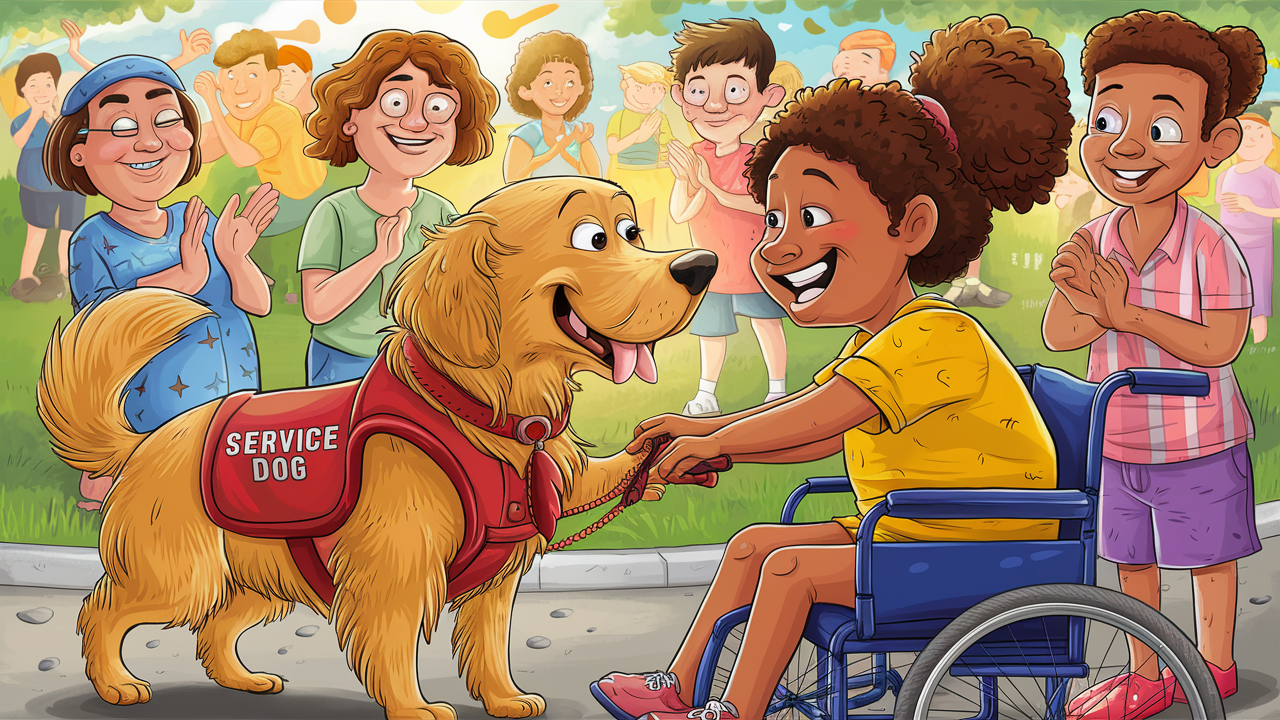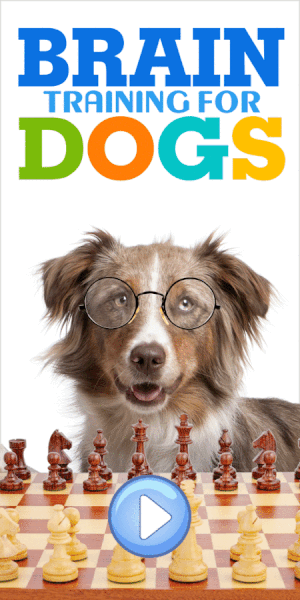7 Inspiring Stories of Golden Retrievers as Service Dogs . Goldens have long held a reputation for being loyal, friendly, and incredibly smart. These qualities make them ideal candidates for service dog roles, where they can profoundly impact the lives of their handlers.
From physical support to emotional comfort, these dogs excel in various situations, showcasing their incredible versatility and dedication.

Why are Golden Retrievers so well-loved as service dogs? Their natural instincts and trainable nature allow them to form strong bonds with their humans, helping in ways that go beyond mere tasks.
Readers will find inspiration and warmth in the stories highlighting the unique ways these Golden Retrievers have touched lives, reminding us of the extraordinary bond between humans and dogs.
1) Buddy’s Heroic Act Saving His Owner from a Fire
Buddy, a Golden Retriever, awoke one night to the smell of smoke. His owner, John, had fallen asleep on the couch, unaware that a fire had started in the kitchen.
Realizing the danger, Buddy immediately sprang into action. He ran over to John and began barking loudly, trying to wake him up.
When John didn’t respond, Buddy tugged at his sleeve with his teeth.
John finally woke up, groggy and confused. He saw the fire and realized the immediate danger he was in. Thanks to Buddy’s quick thinking, John had enough time to grab his phone and call 911.
Firefighters arrived shortly after and managed to control the fire before it spread further. John and Buddy were both safe, although a bit shaken up.
Buddy’s actions were truly remarkable. Not only did he sense the danger, but he also had the presence of mind to wake John up and lead him to safety.
This heroic act shows the incredible bond between humans and their dogs, proving once again how valuable service dogs can be in everyday life-threatening situations.
John couldn’t have been more grateful to Buddy, who has become not just a pet but a genuine hero. This story will always be a testament to the courage and loyalty of Golden Retrievers like Buddy, who go above and beyond to protect their loved ones.
2) Max Helping Kids with Autism Excel in School

Max, a student at the Lionheart School in Alpharetta, Georgia, has formed a remarkable bond with a group of future service dogs. These puppies are trained to support kids with autism, and Max’s experience shows just how impactful these dogs can be.
Whenever Max feels overwhelmed, spending time with the dogs calms him down. This bond helps him focus better on his schoolwork.
Other children at the school also benefit from these canine companions, experiencing reduced anxiety.
Seeing Max interact with the dogs shows how they can boost social interactions. His connection with the dogs encourages him to engage more with his classmates. This promotes a more inclusive environment for everyone.
The dogs are also trained to help in various settings, getting used to places like stores and amusement parks. This helps them handle real-world situations, making them invaluable companions for children like Max.
At the core, these dogs provide more than just emotional support. They are trained to assist physically, guide, and even help develop life skills. Their presence can make a world of difference, not just for Max, but for all kids at the school.
For more information on how these dogs are trained and their impact, visit Lionheart School.
3) Daisy’s Strong Bond with a Veteran Suffering from PTSD

Daisy, a golden retriever, has transformed the life of Mike, a veteran dealing with PTSD. Mike struggled with anxiety and flashbacks, finding it hard to lead a normal life. Daisy was introduced to him through a program designed to help veterans with PTSD, like K9s For Warriors.
From day one, Daisy provided companionship and a sense of security. Her calm demeanor helped ease Mike’s symptoms, allowing him to better manage his anxiety and sleep more peacefully.
Daisy’s presence has even allowed Mike to start experiencing social activities again. He now goes out for walks and attends local events, all thanks to Daisy’s steady support.
Daisy’s ability to sense Mike’s distress and provide comfort has significantly lowered his reliance on medication, echoing findings from studies on service dogs and their impact on PTSD symptoms, such as those published in JAMA Network Open.
Their bond is a testament to how service dogs like Daisy can make a world of difference for veterans. Daisy doesn’t just provide physical companionship; she offers emotional healing, making every day a bit easier for Mike.
4) Charlie Providing Comfort to Elderly Residents in Nursing Homes
Charlie, a golden retriever with a heart of gold, spends his days visiting nursing homes. He brings joy to elderly residents who often feel lonely.
Each visit he makes is filled with wagging tails and warm snuggles, which brighten the residents’ days.
His presence has a calming effect on the residents. They smile more and feel less stressed.
Charlie’s gentle nature and friendly attitude make him a perfect companion for seniors facing health issues.
Charlie’s visits aren’t just about fun; they also offer emotional support. Many residents see him as a friend. His visits give them something to look forward to. It’s a small but significant part of their lives.
What’s special about Charlie is his ability to sense who needs him the most. He often curls up next to someone who seems sad or anxious. It’s like he knows just what they need.
In many ways, Charlie acts like a family member for these residents. His regular visits provide a sense of routine and stability. This consistency helps improve their overall well-being.
Read more about the impact of dogs like Charlie in nursing homes on Golden Retrievers As Service Dogs.
5) Luna’s Story: Transforming Lives of Children with Disabilities
Luna is a golden retriever with an incredible journey. She started working with children at the Kennedy Krieger Institute.
Her gentle nature and patience have made her a favorite among kids.
Many children with disabilities face daily challenges. Luna helps them navigate these obstacles with her supportive presence. She has become more than just a service dog; she’s a friend.
Luna’s impact goes beyond physical assistance. She provides emotional support, helping children build confidence and overcome fears.
Parents and therapists have noticed significant improvements in the children she helps. Luna’s ability to sense when a child is in distress and calm them is astonishing.
Her story is a testament to the potential service dogs have in transforming lives. Luna’s work at Kennedy Krieger Institute can be explored further at Remarkable Perseverance: Luna’s Story.
Luna continues to inspire everyone she meets. She shows that with a bit of love and support, overcoming adversity is possible. Her presence brings hope and joy to many families.
6) Rocky’s Journey from Shelter Dog to Lifesaving Seizure Dog
Rocky wasn’t always the heroic figure he is today. He started his life in a shelter, where his future seemed uncertain.
This golden retriever had a lot to offer, though, and his potential was recognized by a dedicated trainer.
Rocky’s journey began with basic training, where he quickly showed intelligence and a gentle demeanor. These traits made him a perfect candidate for advanced training as a seizure alert dog. He began to learn how to sense the early signs of a seizure.
Throughout his training, Rocky formed a strong bond with his human partner, Sarah.
Sarah had been living with epilepsy for years and struggled with the unpredictability of her condition.
Rocky’s ability to alert her before a seizure allowed her to find a safe place and take necessary precautions.
Their partnership transformed Sarah’s life. She gained a sense of independence she hadn’t felt in years.
Rocky’s alerts meant she could live more freely, knowing her faithful companion was always watching over her.
Rocky’s story is a testament to the incredible capabilities of service dogs and the deep connections they form with their human partners. His journey from a shelter dog to a lifesaving hero continues to inspire many. For more details on the impact of seizure service dogs, visit this real-life story.
7) Bella’s Adventures as a Mobility Assistance Dog

Bella, a golden retriever, has been a true companion to Jake, a young man with mobility issues.
She was trained to assist him in his daily life, providing help with tasks that many take for granted.
Bella learned to pick up objects, open doors, and even help Jake stand up from a seated position.
Jake’s family was initially unsure if a dog could make such a difference.
Bella’s training was thorough, and soon, her intelligence and patience began to shine.
She would walk beside Jake, ensuring he felt steady and secure. Her calm demeanor offered him the confidence he needed to venture out more often.
Bella’s bond with Jake grew stronger each day.
Her ability to understand his needs without verbal commands was remarkable.
When Jake had bad days, Bella would nuzzle him, providing comfort and warmth.
She never faltered, always being there for him, offering both physical support and emotional strength.
Through her dedication, Bella became much more than a service dog. She became a symbol of hope and a reminder that sometimes, the most significant help comes from our furry friends.
Bella’s adventures with Jake showed the true potential of golden retrievers as mobility assistance dogs, highlighting their loyalty and ability to transform lives.
The Role of Golden Retrievers as Service Dogs
Golden Retrievers are immensely valuable as service dogs due to their loyalty, intelligence, and friendly nature. They excel in providing both physical assistance and emotional support to individuals with various needs.
Physical Assistance
Golden Retrievers are highly regarded for their ability to provide physical assistance to people with disabilities. These dogs are strong and capable, making them suitable for tasks such as opening doors, retrieving dropped items, and even pulling wheelchairs.
Their size and strength enable them to support individuals who need help with mobility.
They are also trained to assist visually impaired individuals, acting as guide dogs to help them navigate safely. Similarly, they can alert deaf individuals to important sounds, such as doorbells or alarms.
Their intelligence and trainability make them ideal for learning and performing these complex tasks effectively. Golden Retrievers not only improve the quality of life but also provide a sense of independence to their handlers.
Emotional Support
Golden Retrievers also play a crucial role in offering emotional support. Their friendly and gentle nature makes them perfect companions for people dealing with stress, anxiety, and depression. Therapy dogs, as they are often known, visit hospitals, nursing homes, and schools to offer comfort.
These dogs create a calming presence, which can lower blood pressure, reduce stress, and provide a sense of security. They are trained to recognize signs of anxiety and intervene by offering companionship and affection.
Their ability to understand human emotions and respond appropriately helps people feel more connected and less isolated. Golden Retrievers provide not just physical support but also emotional healing, enhancing the well-being of those they assist.
Training Golden Retrievers for Service
Training a Golden Retriever to be a service dog involves early socialization and mastering basic commands, followed by learning specialized skills tailored to support their handlers in daily life.
Early Socialization and Basic Commands
Training a Golden Retriever to be a service dog involves early socialization and mastering basic commands, followed by learning specialized skills tailored to support their handlers in daily life.
Early socialization is crucial. Golden Retrievers should be introduced to different environments, people, and animals from a young age. This helps them remain calm and unflappable in various situations.
For example, taking a puppy to busy parks, quiet libraries, and bustling markets can provide diverse experiences.
Basic commands like “sit,” “stay,” and “come” are fundamental. These commands form the foundation for more complex tasks later.
Reinforcing these behaviors with positive rewards, such as treats or praise, ensures the dog understands and retains these commands. Training sessions should be short and fun to keep the dog engaged and enthusiastic.
Leash training is also essential. Service dogs must walk calmly beside their handlers without pulling or becoming distracted. Patience and consistency are key.
Starting early with gentle corrections and lots of positive feedback can make leash training a smooth process.
Advanced Service Dog Skills
Once Golden Retrievers have mastered basic commands, they can begin learning advanced skills tailored to their future roles.
For assistance dogs, this might include tasks like opening doors, retrieving items, or pressing buttons to help with mobility issues. These tasks require precision and reliability, which come from consistent practice and reinforcement.
Service dogs supporting individuals with hearing impairments might be trained to alert their handlers to sounds like doorbells or alarms.
Their training involves associating specific sounds with particular actions. For instance, the dog might nudge its handler when it hears a phone ring.
Emotional support tasks, such as providing deep pressure therapy for anxiety, are also common.
Golden Retrievers can learn to apply gentle pressure using their body weight, which is calming for individuals during stress.
Training Golden Retrievers to perform these complex tasks takes time and patience, but their intelligence and eagerness to please make them excellent candidates for service dog roles.









